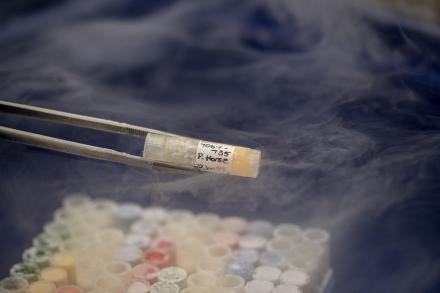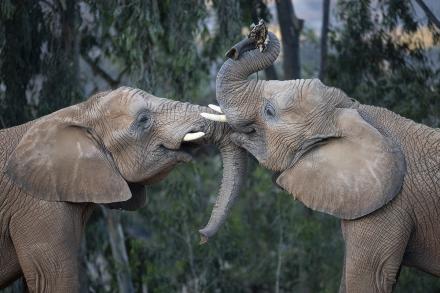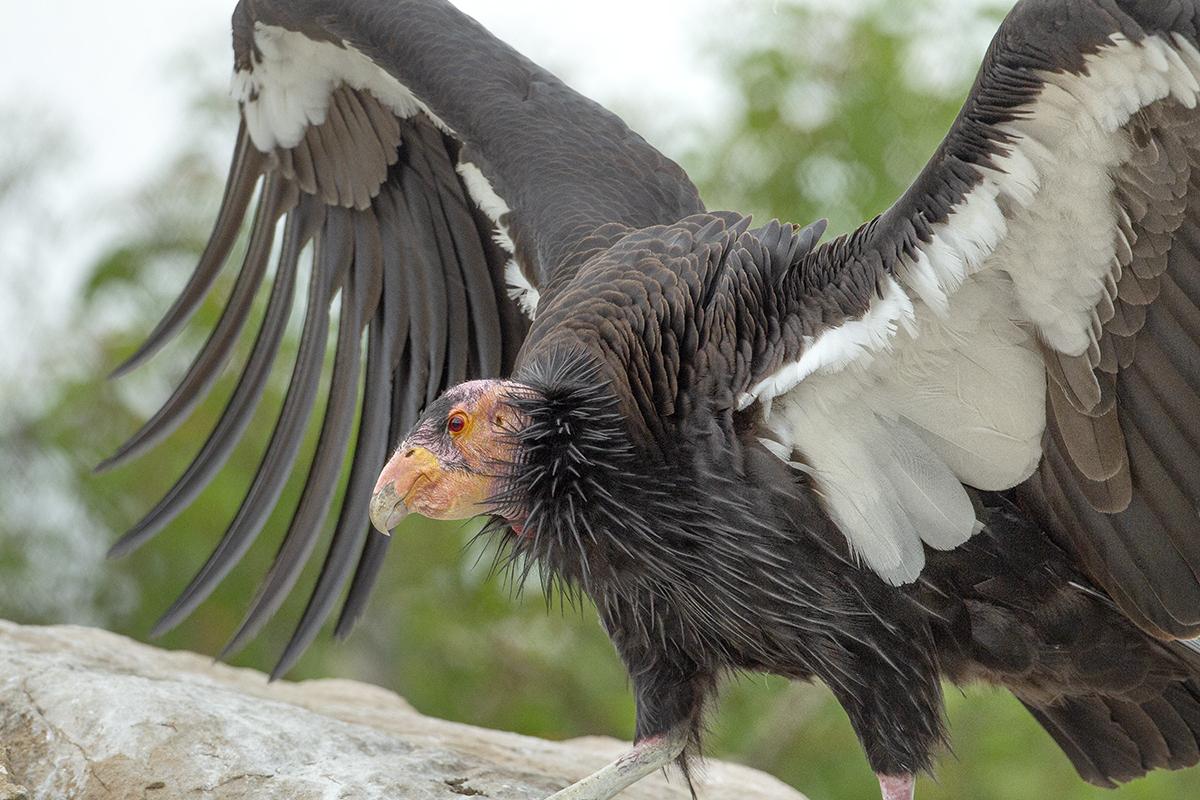
At San Diego Zoo Wildlife Alliance (SDZWA), our Wildlife Health team plays a crucial role in this interconnected effort. From health monitoring to disease detection and prevention, to customized medical care and species-specific nutrition, this expertise is essential to the success of our conservation programs.
For wildlife in SDZWA’s Southwest Conservation Hub, our Wildlife Heath team merges leading expertise in disease investigation, clinical laboratory techniques, veterinary medicine, and preventive care to ensure that our regional wildlife thrives. Together we explore underlying causes and implement solutions to support the health of wildlife, both in our care and in their native habitats.
The health of every individual animal is important. This is especially true when a species hangs on the edge of extinction, as is the case for much of California’s wildlife. Embracing innovation and adaptiveness and working closely with teams across SDZWA, our Wildlife Health team is committed to comprehensive well-being and holistic conservation, starting in our local ecosystems.
Under Our Wing
San Diego Zoo Wildlife Alliance has long been a leader in California condor health. Our conservation breeding and release efforts boosted their numbers from only 22 in the 1980s to more than 550 today. In 2007, our studies of lead poisoning in condors helped secure a legislative ban on lead ammunition throughout areas inhabited by condors in California.
But despite these conservation milestones, these birds are still critically endangered, so the health of each condor remains vital. The unique health care we provide begins before the birds have even hatched: we pioneered the clinical use of computed tomography (CT) imaging to monitor chicks inside their eggs,
enabling our team to assist with and ensure successful hatches.
Our dedicated health care continues throughout every stage of condor life. Regular medical checkups—including physical exams, vaccines, and bloodwork, much like in human medicine—create a window into the well-being of condors in our care and assure us that we are releasing healthy birds into their ranges in the United States and Mexico.
SDZWA also recently helped pilot a vaccine to protect condors against highly pathogenic avian influenza (HPAI). These efforts provided insight into vaccine efficacy and informed vaccination protocols for free-flying condors and others in managed care.
5394.jpg?h=6eb229a4&itok=r88bT5z4)
SDZWA pioneered the clinical use of CT imaging to visualize chicks while they are
still inside their eggs.
Leaps Forward
Infection by invasive chytrid fungi is a leading cause of death for mountain yellow-legged frogs in Southern California. To provide an immune system boost, the Alliance is working on a collaborative immune priming study in which we expose frogs in our care to chytrid and clear their infections with an antifungal treatment before we release them in native mountain streams. Our veterinary expertise informed dosing, treatment, and medical needs throughout the study. Our in-house Conservation Science and Molecular Diagnostic Laboratory teams isolated and cultured the chytrid from a local site and identified the amount of fungus to use for exposures. This approach, similar to a vaccination, requires exacting knowledge to challenge and ready the frogs’ immune systems to respond to chytrid exposure after reintroduction.
Our efforts to protect frog health continue after the frogs leave our care. We validated a handheld polymerase chain reaction (PCR) machine that tests individual frogs for chytrid on the spot, providing critical data about infection presence that allows us to make rapid decisions about administering antifungal treatment in the field. Deceased frogs found in the field are also brought back into our laboratories for post-mortem examination and diagnostic testing. Additionally, our team is conducting toxicology testing at frog release sites to assess contaminants in the water, supporting our strategies to find optimal locations for releases.
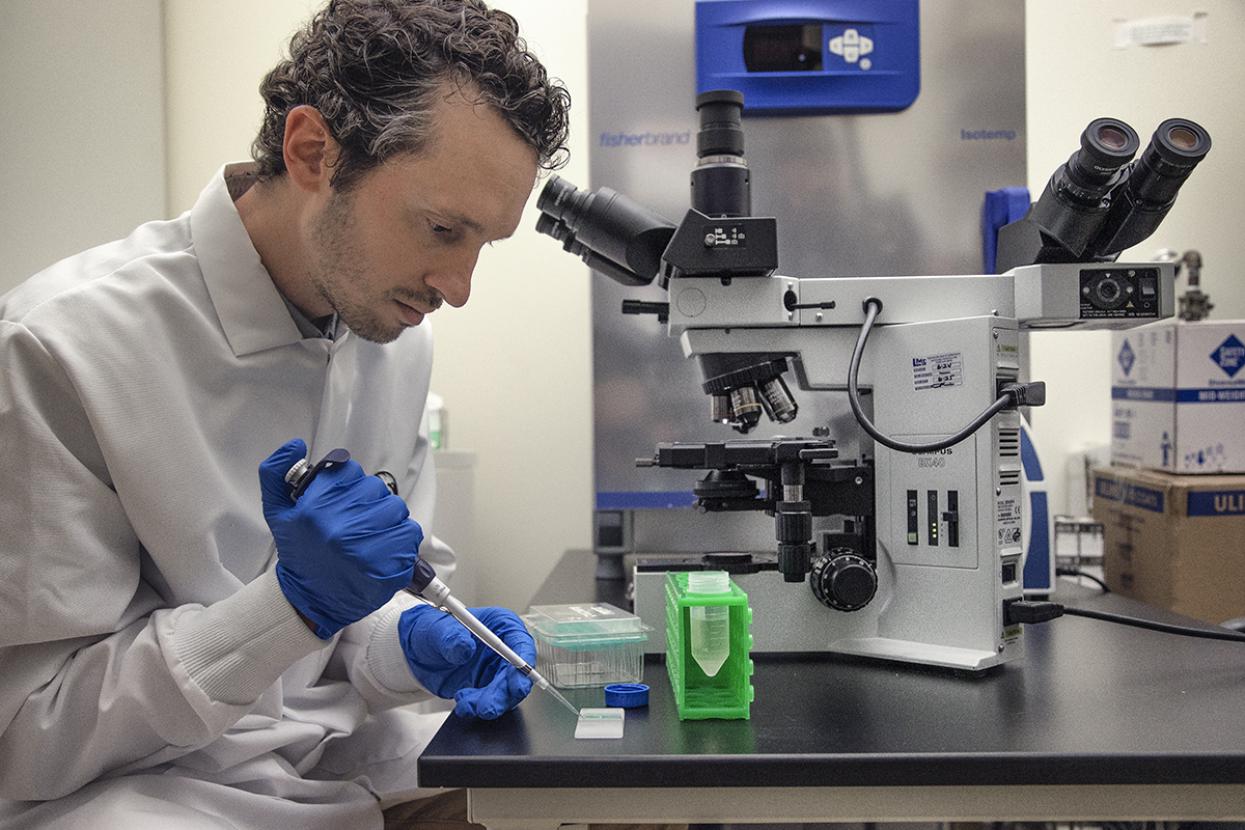
Infection by invasive chytrid fungi is decimating frog populations in California and around the world. Our team is developing an immune priming system to boost mountain yellow-legged frogs’ resistance to chytrid infection. This process includes culturing the fungi in our laboratories to identify strains and determine the precise quantity of infectious agents necessary to safely challenge the frog immune system.
Small-Scale Care
San Diego Zoo Wildlife Alliance is the only conservation organization with Pacific pocket mice in managed care, and our conservation breeding program raises mice
for reintroduction to their endemic scrublands. We are uniquely positioned to gather the health information that is fundamental to our mission of establishing new, genetically diverse populations of this critically endangered species.
Pacific pocket mice measure just five inches in length from nose to tail tip. Unsurprisingly, these miniature animals produce miniature droppings, though these are anything but insignificant. In our state-of-the art clinical laboratory, we regularly analyze fecal pellets from individuals in the field and in our care. Doing so allows us to check for parasites and monitor the health status of pocket mouse populations. The mice’s size also means that medical care must be shrunken down to a tiny scale. It isn’t easy to do procedures such as modifying an anesthetic circuit and performing a C-section on an animal whose body is approximately the size of an adult human’s thumb. But we constantly innovate to meet challenges like these, adapting existing tools to create novel setups for delivery of cutting edge care to even the smallest of patients.
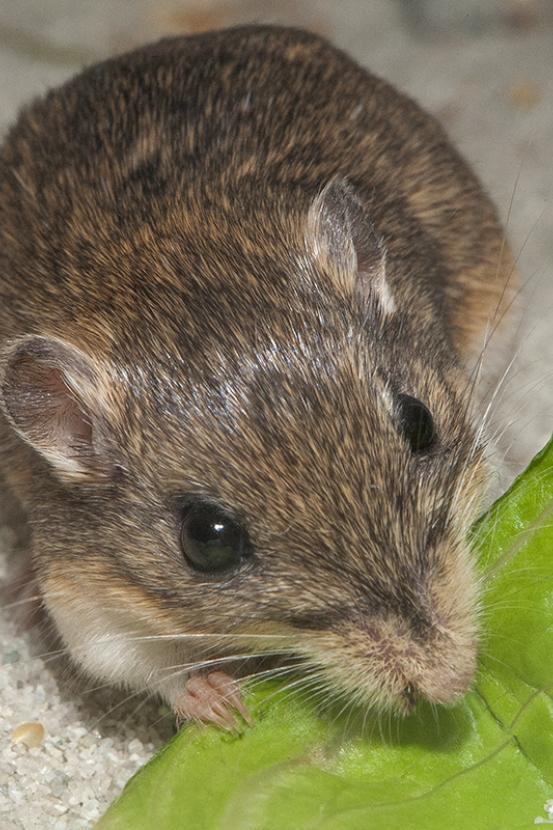
Pacific pocket mice measure just five inches in length from nose to tail tip.
A Healthy Dose of Effort
These cases are a glimpse of the many ways our world-class Wildlife Health team upholds the highest standards of care. Whether we are taking proactive steps or responding to emerging threats, we devise evidence-based methods to advance both local conservation and the well-being of wildlife everywhere. We go the extra mile for wildlife health because for Pacific pocket mice, mountain yellow-legged frogs, California condors, and dozens of other species in the Southwest and beyond, efforts like these are a lifeline for their future.

